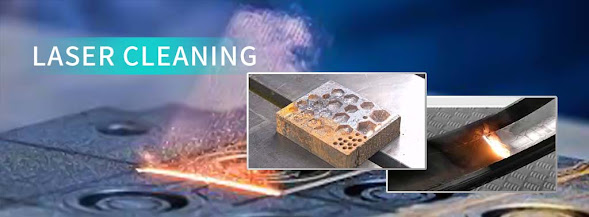LASER COATING REMOVAL CLEANING MACHINE
In the automotive industry, Laser coating removal cleaning are mainly used on lithium batteries in new energy vehicles for the removal of cell coatings, pole piece cleaning, pole cleaning, cover plate cleaning, foil cleaning and other small parts. Laser cleaning is required to be finer and more precise. Therefore, pulsed laser cleaners are mainly used in the automotive industry. The power of our pulsed laser cleaners is 50W, 100W, 200W, 300W and 500W, which basically has zero damage to parts, and is very suitable for the removal of laser coatings on batteries. Industries that require high precision.
Laser cleaning of metal foil parts:
The positive and negative electrodes of the lithium battery are made by coating the positive and negative materials of the lithium battery on the aluminum foil and copper foil. The coating of the electrode is of great significance to the safety of the battery. If particles, debris, dust and other media are mixed in during the coating process, it will cause a micro-short circuit inside the battery, and in severe cases, the battery will catch fire and explode. Therefore, the foil needs to be cleaned before coating to obtain a completely clean and oxide-free surface. Existing battery pole pieces are generally cleaned by ultrasonic waves, and ethanol solution is used as a cleaning agent as a cleaning process before coating. However, this method has certain limitations. When ultrasonic cleaning metal foil parts, especially aluminum alloy workpieces, is affected by frequency, cleaning time and power, the cavitation effect of ultrasonic waves is easy to corrode aluminum foil, resulting in fine and dense holes. The longer it is, the bigger the hole. The foils used for lithium battery pole pieces are generally single-zero foils with a thickness of 10 μm, which are more susceptible to tearing and forming holes due to cleaning process problems. Using ethanol solution as a cleaning agent is not only easy to cause damage to other parts of the lithium battery, but also prone to "hydrogen embrittlement", which affects the mechanical properties of the aluminum foil. The use of laser ablation coating removal technology can not only improve the efficiency of the cleaning process and save cleaning resources, but also establish real-time monitoring of cleaning process data and quantitative judgment of cleaning results, which can effectively improve the consistency of batch production of pole pieces.
Cell tab laser cleaning:
The tab is the metal strip that draws the positive and negative electrodes out of the battery cell, and is the contact point when the battery is charged and discharged. Contaminants on the surface such as grease, corrosion inhibitors and other processing compounds can cause problems such as poor fusion, cracks and porosity in the weld. In the process of leaving the factory, the tabs often appear uneven, bent or even twisted, and the welding strength between the tabs and the battery core is weak, resulting in virtual welding, false welding, short-circuiting, etc. during welding, resulting in a decrease in the conductivity of the welded joint , ultimately limiting the overall performance of the battery pack. Whether the surface of the contact point is clean will greatly affect the reliability and durability of the electrical connection. Currently, manual cleaning, wet cleaning, and plasma cleaning all have different problems. Laser coating removal technology can greatly improve this problem. .
At present, everyone is mainly concerned about the following aspects of laser ablation coating removal: optimizing the coating removal process; minimizing the risk of substrate damage; reducing the health impact on practitioners; environmental impact; and reducing labor costs. These problems are also what our company pays attention to when developing and producing laser cleaners. We can guarantee that we will do our best to solve the problems you worry about.



Comments
Post a Comment